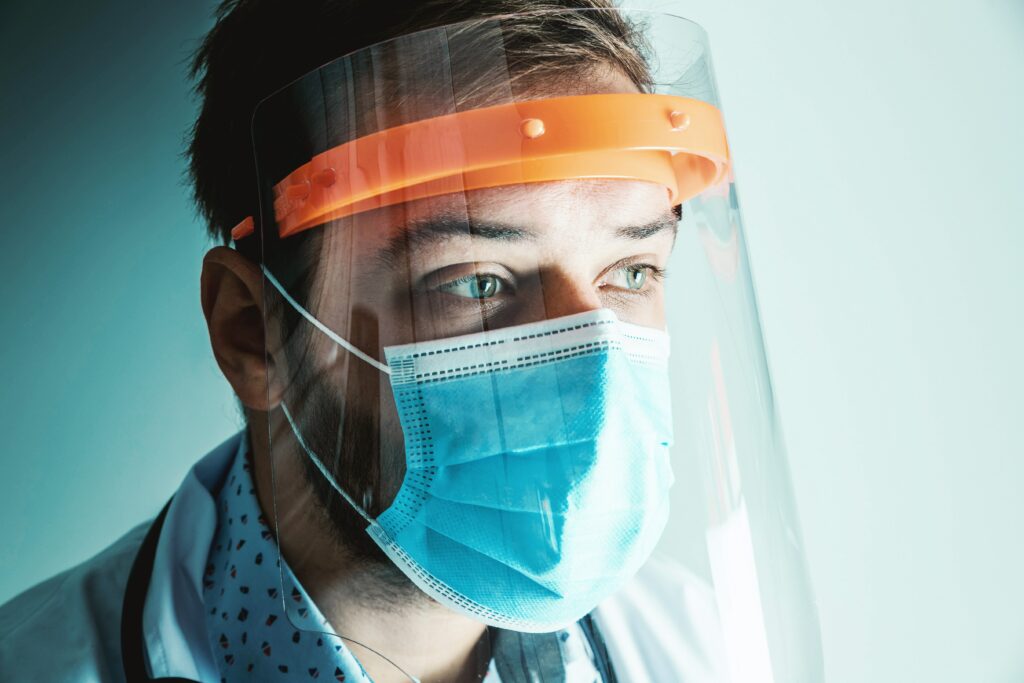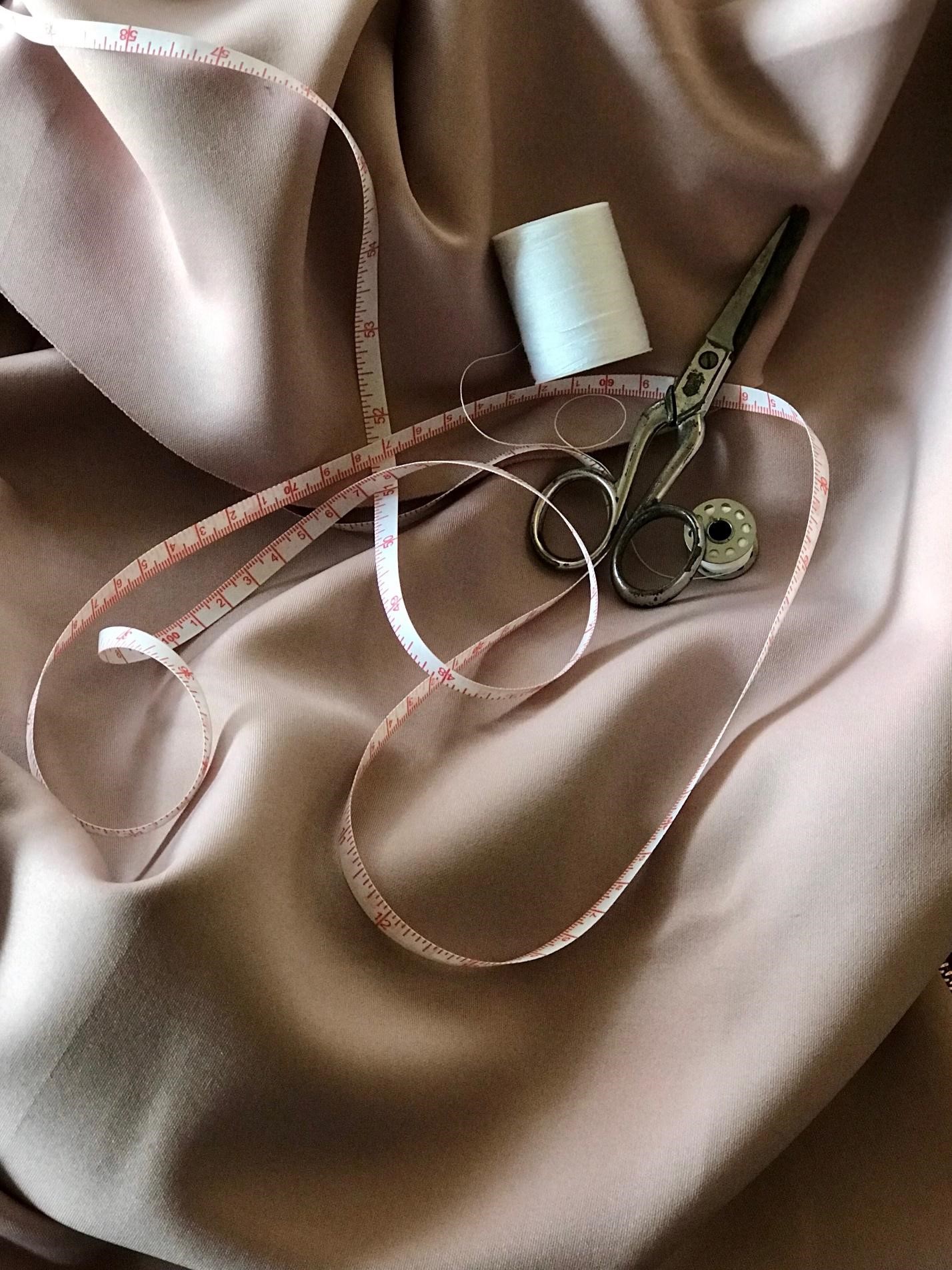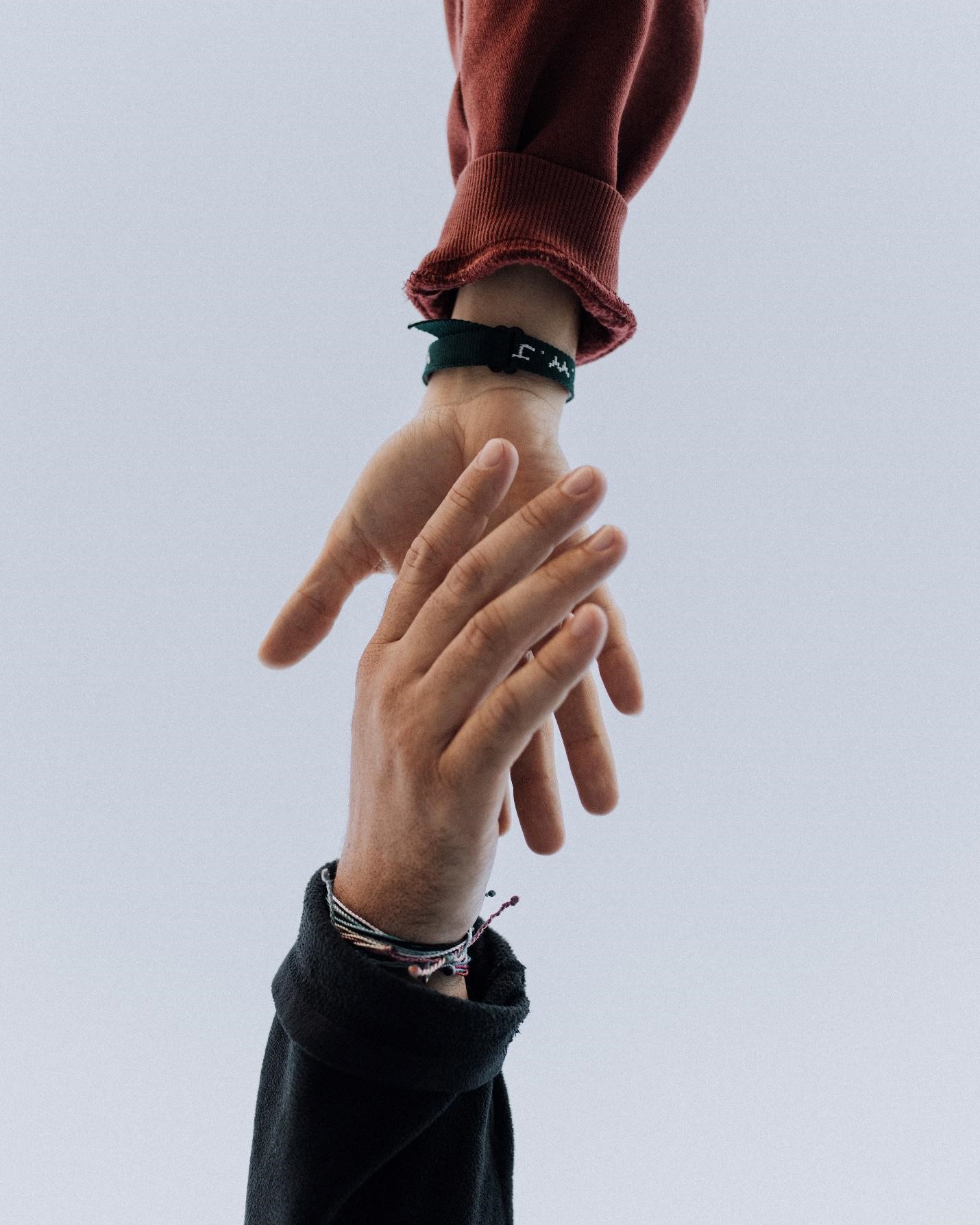When the World Changed IV. Engagement and conceptions of the coronavirus impacts on the future
- Miroslava Hlinčíková, Soňa G. Lutherová a Ľubica Voľanská
- • 10.8.2022

During the second half of March 2020, members of a research team from the Institute of Ethnology and Social Anthropology SAS carried out a pilot survey about everyday life during the coronavirus epidemic in Slovakia. On a specific sample, the research captured the unprecedented and radical change in people’s life circumstances. As shown in the previous three reports, [1] the coronavirus epidemic significantly impacted the everyday functioning of households and their routines. The fourth report will attend to how people engaged in different activities and their notions about the impact of the epidemic on their lives.
Even though, people lost most possibilities to meet with their loved ones or friends for the duration of the pandemic and the time of recommended isolation, they developed various methods of how to connect and support each other. Not only within close family units but also within wider social networks. Thus, people reacted to fear, insecurity and threats related to the epidemic by creating diverse and (more or less) organized initiatives or support and solidarity networks. Active organizations, engaged individuals, local governments but also neighbourhood and other communities played an important part. They reacted to the emerging problems (lack of medical equipment or protective equipment and lack of relevant information), situations (strict isolation of the most vulnerable groups – the elderly, sick, problematic isolation of homeless…) or feelings of fear, shock and insecurity.
Engagement during the coronavirus epidemic
Our research also showed that people actively participated or wanted to participate in different forms. Despite the fact that respondents filled out the questionnaire in the second half of March, i.e. at the beginning of the outbreak in Slovakia, almost half of the respondents stated that they had already managed to participate in voluntary activities, which aimed to improve the social situation (46%) and another tenth of respondents planned to. A third of the respondents, on the other hand, shared a negative response, i.e. they did not participate in any activity (33%). People explained it by a lack of time and capacity due to being more involved at work or in the household at that time.
Every second respondent from those who stated that they had participated in one of the voluntary activities was involved in making face masks (43%). In addition to sewing, this also included helping with distribution, procuring fabric or rubber bands to make masks from, ironing or folding. Thus, people reacted to the newly implemented rule for face covering and face masks[2] and their general shortage[3] quickly.
Face masks became a symbol of the “fight against the pandemic”, a sign of solidarity, collective care and mutual responsibility[4]. Many people mobilized: they made face masks themselves at home or they got organized within smaller groups. “Yes, me and 10 other girls are sewing face masks for the village. For free. People bring us material. The mayor gets us what we need.” They made face masks for close and distant family, acquaintances, neighbours, seniors, medical staff, shop assistants and the homeless on a voluntary basis. “I help my father cut fabric for face masks – he sews them for family, for colleagues, for anybody who needs them.” Women mentioned sewing face masks in their responses more often than men and age-wise this response was more often mentioned by young people aged 18 to 29 as well as older people over 50. People living in multigenerational families participated in such activities more and we assume that they were able to divide work and tasks connected with the household among more members and thus were able to manage their time better.

The second most widespread form of help was making financial contributions. It was spontaneously mentioned by a quarter of people; mostly men and respondents without children. They contributed to initiatives that support the homeless, distribute medical equipment[5], support doctors, artists or the self-employed. The third most common form of active participation was informing or sharing information (15%). Respondents mentioned delivering information leaflets with useful information in their neighbourhood, sharing interesting resources on social networks and pointing out hoaxes or fake news: “I hung posters about the measures that residents should comply with. They already copied them and hung them on all the doors and elevators…” “I try to communicate about the need to protect oneself and others, why it is important that we all contribute and help mitigate the spread of the virus and remain calm, because panic and hoaxes won’t help.” Informing as a form of participation or engagement was mentioned more by men than women, mostly aged 30-39 and again more often by childless people.
Other voluntary activities that were mentioned often included shopping for vulnerable or at-risk groups of residents (11%), i.e. for the elderly, single mothers or people who lost work. People stated that they had hung notices offering help with shopping (but also walking dogs or going to the pharmacy) in their neighbourhoods, entrances to apartment buildings or in their village (on the shop): “I shop and communicate for four households with older people who do not have any other family to help them.” It was one of the ways people tried to protect the most vulnerable group of the oldest from getting infected when shopping or going about in public.[6]
Research participants described that they did not cope well when the situation worsened with constantly increasing numbers of active cases in Europe, Italy and of course in Slovakia. Many felt overloaded, afraid, stressed and their basic certainties were shaken. That is why several voluntary activities actively attempted to provide support and ease the situation (11%). People tried to mutually interconnect or support each other and express a sense of belonging or solidarity: “We share supplies of food, face masks and disinfectant in our local neighbourhood community.”
Activities mentioned in the questionnaire also included spreading positive news and intentional humour – funny content in communication, online meetings or support chat groups: “I created a group for people to vent their frustration and stress.” They also included regular phone calls with loved ones or acquaintances. Such support also consisted of creating online content as e.g. recording live concerts, workouts or reading online (also intergenerational). In their own words, respondents tried to communicate empathetically, provide encouragement and purposefully kept in touch with people outside their immediate circle.
People also spontaneously mentioned other diverse forms of help, e.g. education (tips for educational activities, exercises, interactive applications), interconnecting people who could help each other (when looking for work or information), helping family and friends with shopping and care. Several were directly involved in the creation of protective measures in their neighbourhood, municipality or town, they worked as support professionals (social workers, healthcare workers, psychologists). Especially young people [7] actively participated or offered their time to volunteer in quarantine centres, hospitals or assisting with other necessary activities: “I wrote to maybe five organizations…”
Many also mentioned supporting local businesses, shops and artists. This meant e.g. not returning already purchased tickets for performances or regularly having meals and groceries delivered home. In connection to supporting culture and art, respondents mentioned the Stojíme pri kultúre platform (We stand with culture) and supporting the open letter to the Minister of Culture, some were involved with the CoronART group – online gallery[8].

Notions and expectations during the coronavirus epidemic
At the time when people were filling out the online questionnaire, it was hard to predict the impact of the quarantine, physical isolation and partial “turn-off of the economy” on Slovakia: number of infected people, duration of strict regulations and their direct or indirect consequences. While waiting may induce helplessness and passivity in people, during this specific epidemic period, it had additional significance. As people were in wait – stayed isolated in their homes, simultaneously they were doing something very important – protecting themselves and others[9]. Some used the waiting period to engage and attempted to improve the situation. How did people describe their notions related to the impact of the coronavirus epidemic on their lives?
Despite the uncertainty of the situation, a quarter of respondents believed that after the coronavirus epidemic had passed, it would not have impacted their lives (26%). A tenth of respondents were of a similar opinion as they said that the epidemic would not impact them financially nor work-wise (11%). These were mostly older people over 60 but also parents on maternity and parental leave. Fifteen percent of respondents were not able to evaluate the impact of the epidemic at that time; mostly people aged 40 to 59. In this regard, it is again necessary to remark that the research was carried out in the second half of March, immediately after a state of emergency was declared, i.e. it can be assumed that the results of the survey would have been different if carried out later.
On the other hand, approximately a fourth of the respondents (24%) supposed that they would have to economize, “tighten their belts” or that they would face financial difficulties due to the epidemic. This group consisted mostly of respondents in the most productive age group of 30 to 39. Their worries were related to the loss of one or both incomes (“Our income has drastically decreased.”), decrease in the standard of living, work uncertainty or the need to use their savings and financial reserves. Several people expressed worry about their ability to keep paying mortgages and loans and the need to request a deferral of loan instalments: “Both of us are entrepreneurs… Right now, we have almost no income and we have quite many loans.” The extent to which people worried about their income and their ability to handle this period financially differed on a range of hesitant or neutral descriptions: “We will survive, it won’t ruin us,” to more negative predictions related to severe financial difficulties: “I won’t be able to pay for anything, currently I am on family care leave and that barely covers the food but not the rent and loans.” In this context, many have described that they realized the importance of creating a bigger financial reserve for the future.
Several people spontaneously stated that after returning to work, they would be “overloaded”: catching up with missed tasks and work meetings and thus a heavier workload and higher performance: “It will be hectic and it will impact family life and other areas.” “We will catch up on what is being deferred now.” “We will have to work much more.” Many have also predicted that it would be harder for them to get started and they would have fewer work opportunities. Respondents also assumed that it would be necessary to look for new clients, approach them actively or keep in touch with old ones, seek out new areas of interest and re-evaluate the scope of their business or employment. Entrepreneurs and the self-employed were often convinced that they would have to make do with less, they expected a rocky return to work or financial problems. Apprehension related to work was also connected to fears of losing work and possible lay-offs or shorter work hours.

It was mostly older respondents aged 50 to 59 who were afraid of losing work. As research shows, even under normal circumstances it is harder for people over 50 to find employment, despite experience, on the Slovak labour market (also in EU) [10]. People connected more positive assumptions with return to socialization (11%), “meeting with colleagues”, “more contact with family”. In this context, respondents described that they had for the first time truly realized the value of social bonds and contacts and the time spent with family and friends: “I will probably value ordinary life more, enjoy my family and friends more.” “In regards to family, not being able to see them made me realize how much I miss them and that I would like to spend time with them more intensely and enjoy being able to be with them more.” In this context, even many older people over 60 expressed waiting for the social isolation to end and to no longer feel at risk when spending time outside: “I will finally be able to leave the flat and be with people, meet my closest relatives, see my granddaughters and acquaintances.” However, some were worried about meeting people again, they expected that they would be more cautious and apprehensive about personal contacts (shaking hands, hugging) and mostly about mass gatherings and events with a larger number of people present: “People will be more reserved and I hope that finally they will become more tolerant and won’t use public transport when they are sick. And face masks will become a common part of our lives.” That is why many described that in the future they would be more conscientious about hygiene and would stock up on toiletries. Some apprehension was repeatedly mentioned in relation to travelling abroad; people stated that they planned to avoid travelling and instead would spend their holidays in Slovakia.
In regards to the question about how the epidemic would impact their future lives, people mentioned even some possible positives, e.g. the intense times that the family had spent together in isolation made it more tight knit: “I don’t know, (it will impact us) rather minimally, our family life is currently better. I hope it will last after this is over.” Some have planned that after the epidemic they would emphasize their health and rest more, adjust their pace of life so that they have more time for family and friends and that they would in general “value what we have more”. These spontaneous answers came mainly from people aged 18 to 29.
When the questionnaires were being filled out, people truly could not have known how the situations with the COVID-19 epidemic would develop and naturally they were worried and afraid of its impact on their lives. However, the respondents’ statements revealed that for many these fears were not paralysing. Several fairly quickly mobilized and got involved with various initiatives ranging from sewing face masks to “neighbourly” help. Even today, we are unable to say whether Europe and Slovakia will or won’t be hit by a second wave of the epidemic in the future, however the responses from the survey remind us of how we felt at the beginning of the pandemic. Reflections on the experience at a time when the public discourse is debating whether the whole pandemic was only propaganda could serve as a reminder of what we experienced.
Miroslava Hlinčíková
Soňa G. Lutherová
Ľubica Voľanská
Publication of the text supported the grant VEGA 2/0088/19 Reflexive writing as a method of ethnographic research.
[1] Read more:
Impact of the coronavirus epidemic on everyday life in Slovakia
Caring for the household and children
Communication between generations
[2] On 24 March 2020, the Public Health Authority of the Slovak Republic announced regulations which stipulated that “Effective as of 25 March 2020 from 00.00 until further notice all persons are banned to leave their homes and move in public without covering their upper respiratory tract (e.g. respirator, face mask, scarf, etc.).”
[3] See blog by Alexandra Bitušíková: COVID-19 a móda. (COVID-19 and Fashion)
[4] See also: Trnka, S. (2020). How Did Czechs Wear Face Masks When There Weren’t Any Available? Available HERE.
Makovicky, N. (2020). The National(ist) Necropolitics of Masks. Available HERE.
[5] E.g. The Kto pomôže Slovensku (Who Will Help Slovakia) initiative in two months collected more than EUR 1.3 million for targeted help for healthcare facilities. They got a total of 10,626 donations from 186 companies and 10,404 individuals (Available HERE). By 5 June 2020, the crisis collection of Notabene received EUR 51,000 from 5,500 donors (Available HERE).
[6] Read more HERE.
[7] Read more: Research report HERE.
[8] Read more HERE.
[9] Andits, P. (2020). Waiting During the Time of COVID-19. Available HERE.
[10] Read more e.g. HERE.
Photo 1: P. Messina – unsplash.com
Photo 2: A. Distel – unsplash.com
Photo 3: A. Kehmeier – unslash.com
Photo 4: B. Balogovic – unsplash.com